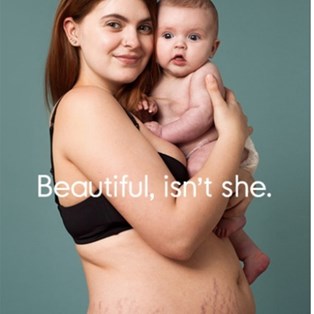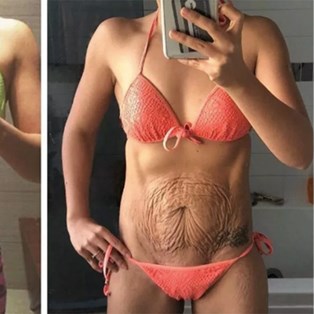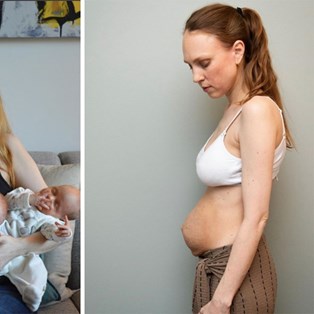Diastastis recti: what causes abdominal separation and how to treat it

Worried about changes to your body? Here's what to do
During pregnancy, it is common for women to experience diastasis recti abdominis, also known as abdominal separation. Around two thirds of women will experience it. The good news is, there are ways to manage and treat ab separation.
What is diastasis recti?
As your belly grows during pregnancy, the connective tissue gets stretched out, allowing the rectus abdominis (your ‘six pack’) to pull apart and separate vertically down your midline.
Sometimes the tissue heals, and the muscles come back together after delivery when your hormone levels return to pre-pregnancy levels. But if this doesn't happen in three to six months, you can end up with a gap that won't close without treatment.
It’s estimated that about 40 per cent of women have diastasis recti at six months postpartum. It can cause your belly to look like it has ‘popped out’ and you can still look pregnant.

getty images
How can I avoid getting diastasis recti?
There are some certain factors which can make you more prone to diastasis recti. If you’re over 35, you’ve had previous pregnancies, you’re expecting multiple babies or your baby has a high birth weight, you’re more likely to develop ab separation.
However, core stability exercises during pregnancy can help strengthen the abdominal region. Here are some tips and suggestions from the Better Health Channel:
• Concentrate on drawing your belly button towards your spine.
• Breathe out while pulling in your belly.
• Hold the position and count to 10. Relax and breathe in.
• Repeat 10 times, as many times a day as you are able.

getty images
How can I tell if I have diastasis recti?
To check if you have diastasis recti, lie on your back, with your knees bent and your feet on the floor. Place your palm face-down on your tummy, with your fingers pointing toward your toes. Press your fingers gently into your navel area then slowly lift your head, drawing your chin to your chest. This will cause your rectus abdominis to contract.
If you feel a gap at least two fingers wide between the muscles as they contract, you have abdominal separation. A four- or five-finger gap is considered severe. Repeat below and above your belly button as the separation may be wider in different parts of your midsection.

getty images
How is diastasis recti treated?
It is important to treat abdominal separation post-pregnancy to avoid becoming at risk of poor core strength, back pain, pelvic floor issues and even a hernia. Other health complications include urinary incontinence, constipation, pain during sex, and pelvic or hip pain.
Gentle exercise and strengthening activities such as yoga and Pilates may help, but it is best to speak with your GP or healthcare provider, as well as your personal trainer or fitness instructor so they can recommend the best exercises and program for you. Some exercises, such as crunches or pull-ups, may actually make the issue worse.
Another option is to see a physiotherapist, who can do an assessment to determine the severity of the separation and recommend a plan to assist in your recovery. Wearing a belly band may also help, and in some cases, surgery may be recommended to help resolve the issue.
Give yourself time
Remember too, that it takes around a year for your body to completely recover from pregnancy and birth, so be patient and gentle with yourself.

Nicola Conville has worked as a journalist and editor for more than 20 years across a wide range of print and online publications. Her areas of expertise are parenting, health and travel. She has two children; Lucy, age eight, and Nathan, age five.













